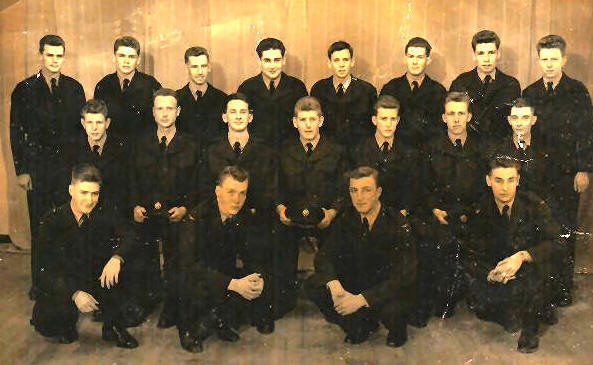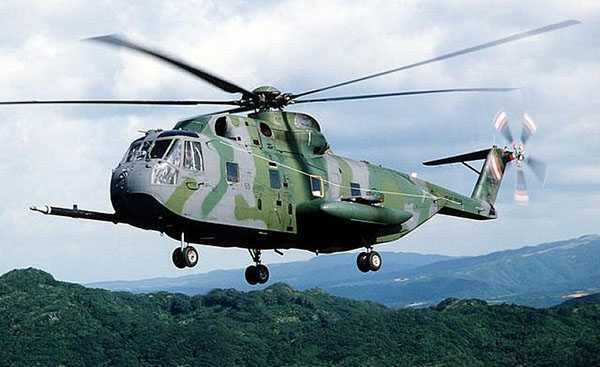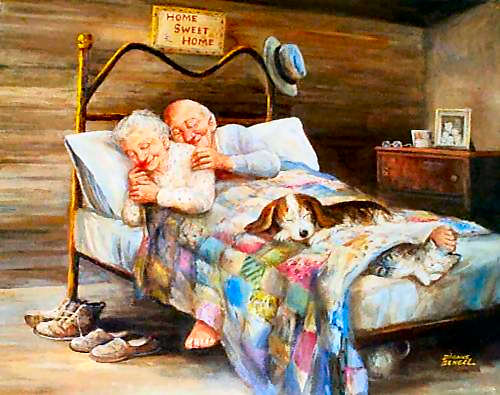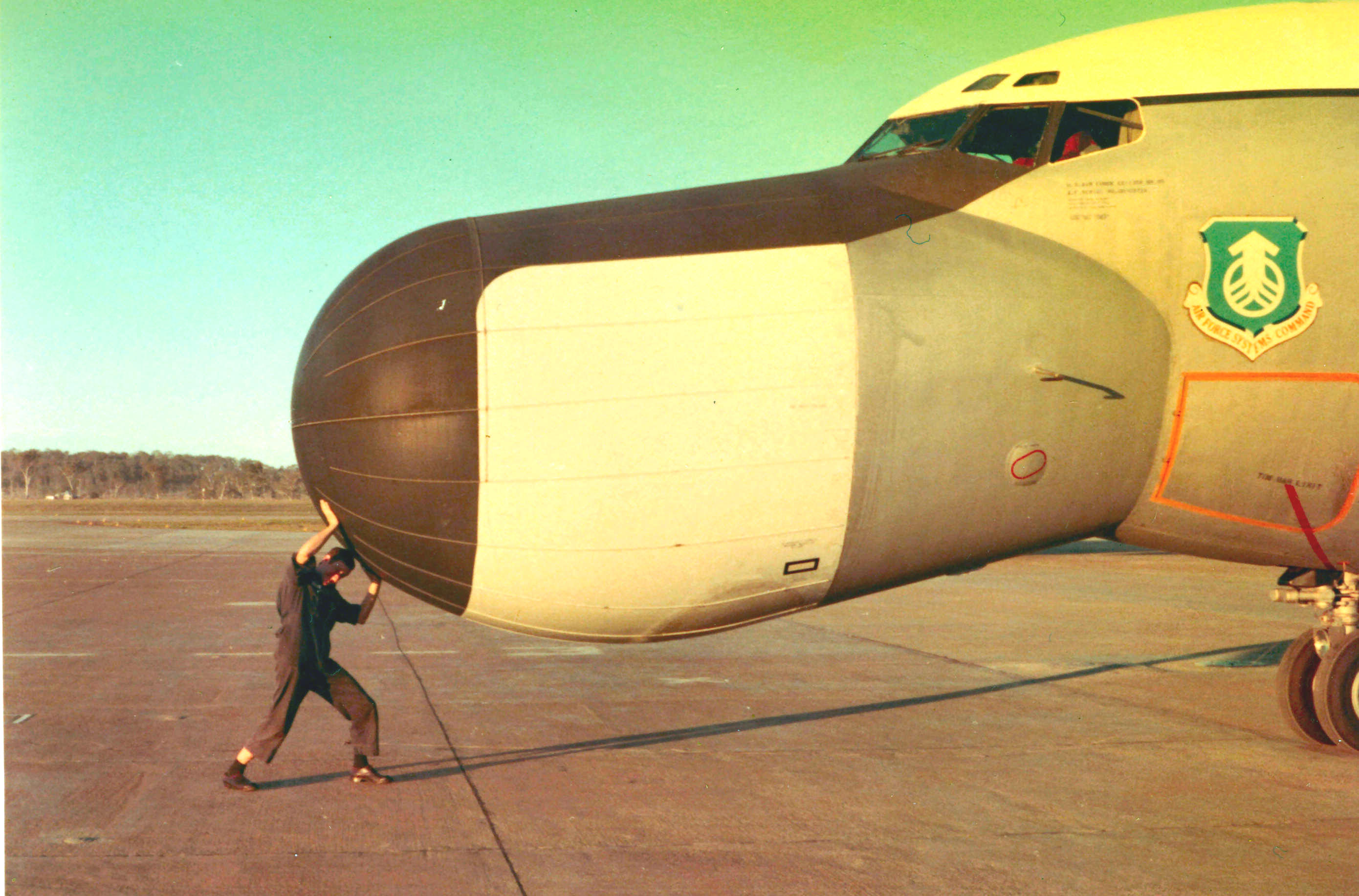|
Radschool Association Magazine - Vol 29 Page 14 |
|
Privacy Policy | Editorial Policy | Join the Association | List of Members | Contact us | Index | Print this page |
|
|
|
24RMC at Ballarat in 1960.
Barry Morris saw the photo below which we had in Vol 22. He said he could only put names to a few of the faces, so we asked Bob Bocos if he could help, and Bob’s brain box went into overdrive and he came up with all the surnames and a couple of the first names, but he reckons it’s stretching things to ask for all the first names. Bob also says the year was 1960, not 1961 as we had suggested.
|
|
|
|
|
|
Back row: Jock Turnbull, N. Martin (Tassie), Daly, Diffy, Smidth, Lorrie Routledge, Bob Bocos, Ken Graham. Middle Row: J. Johnson, Barry Morris, ??, John Harris, Ian Martin, Bruno Trenning, Peter Brown. Front Row: Hillary Johnson, Lee, White, Brunskill.
|
|
After the course, Barry was posted to No.1 Control and Reporting Unit. He says; "The Course Instructors had no idea where it was, so they told me to get to Sydney by Train and from there I would be picked up and taken to the unit. This actually happened, the location was Brookvale. On arrival, I was processed by the orderly room staff then invited to meet the Major. I thought, that's funny, can't remember anyone in the Air Force having the rank of Major - but who knows....... This Major turned out to be in the US Air Force - not the Royal Aussie... Following the formalities, I was taken in tow by my Warrant Officer and shown around the unit. He finally asked me if I recognised any of the equipment. I said "yes, the HF transmitters, AT-17's". His response was that, as of now son, you are in charge. I also became responsible for activities that everyone else avoided like the plague, such as the tool store and the tech. library.
Actually I learned a lot from the library, carrying out all the updates which could have been up to two years behind. Also I collated all the Field Technical Bulletins put out by Bendix, the manufacturer of the search radar, the A/N-FPS-3A.
I went on to 114MCRU at Butterworth, back to 1CARU and then on to 3CARU.
Regards, Barry
*****
|
|
The Iroquois. Brian Dirou
It’s great that
some people are realizing how irreplaceable is the single engine Huey. Twin-engine utility helos are simply not cost-effective operationally.
Very few of them can hover if one engine fails and the additional power
plant gives little gain in aircraft performance due to additional weight,
higher fuel consumption and much
These extracts
are from US Army historical studies: ‘The range and killing power of
the minigun was limited and though the 70 millimetre rockets had much more
reach and punch, they were inaccurate and had to generally be fired in
salvos to blanket a target…… While many (US Army) gunship crews liked the
speed, agility and hard-to-hit slender lines of the Cobra, there was
another faction that preferred the old Huey
The following 2 paragraphs are from 'The Bushranger Story' authored by myself.
High density 7.62mm minigun firing of ball ammunition was very effective at close range in jungle environs and fixed forward-firing primary minigun weapons of the Bushranger enabled very accurate firing extremely close to friendly forces (sometimes within 10 metres). Fixed forward firing 20mm cannon used on some early model Huey-cobras could deliver accurate fire support close to friendly forces albeit at a larger safety distance than 7.62mm mini-guns due to the high explosive fragmentation effect of cannon ammunition. The inherent inaccuracy of 70 millimetre rockets necessitates significant safety distances making this weapon unsuited for intimate air support of friendly forces. The 4 man crew of the Bushranger had all round vision which was of great advantage in reconnaissance, detecting movement and sighting/hearing sources of ground fire plus in fighter versus helicopter tactics development pursued by the RAAF in Australia after the Vietnam War. Broad door-gun fields of fire were also a significant advantage over the Huey cobra.
|
|
|
|
|
|
Back Row L-R: D Long, S Polzin, K (weeds) Harris, M Rust, B Butler, Doug Lennox, Geo Ferlito Sitting: P Christiansen, P Buesel
|
|
|
|
|
|
The simplicity of the Bushranger weapons system was a key feature. Miniguns needed frequent parts replacement due to high usage wear but the overall system only required minimal maintenance and was well suited to operations under adverse field conditions in remote areas and could be fully re-armed by aircrew. The multi-role concept enabled conversion of a modified aircraft from utility helo to gunship within about 90 minutes including weapon system harmonization. Conversely, gunship to utility configuration took only 30 minutes with the gunsights remaining permanently fitted to a modified aircraft. These characteristics exemplified flexibility, versatility and economy of effort which are longstanding principles of war.
Lieutenant General John J. Tolson, US Army
Click HERE to see the concept Huey II
It pays to be old.
An Elderly couple was celebrating their sixtieth anniversary. The couple had married as childhood sweethearts and had moved back to their old neighbourhood after they retired.
Holding hands they walked back to their old school. It was not locked, so they entered, and found the old desk they'd shared, where Andy had carved "I love you, Sally" with his pocket knife.
On their way back home, a bag of money fell out of an armoured car, practically landing at their feet Sally quickly picked it up, but not sure what to do with it, they took it home. There, she counted the money—fifty thousand dollars.
Andy said, "We've got to give it back." Sally said, "Finders keepers." She put the money back in the bag and hid it in their attic.
The next day, two coppers were canvassing the neighbourhood looking for the money, and knocked on the door. "Pardon me, but did either of you find or see a bag that fell out of an armoured car yesterday?"
Sally said, "No." Andy said, "She's lying. She hid it up in the attic." Sally said, "Don't believe him, he's getting senile."
The coppers turned to Andy and began to question him. One says: "Tell us the story from the beginning" Andy said, "Well, when Sally and I were walking home from school yesterday . ... "
The first copper turns to his partner and says, "We're outta here."
What’s this??
Kev Rosser sent us the photo below, he says to show it to Wayne “Sniffer” Smith who will tell us what it’s all about – OK, over to you Wayne….
|
|
|
|
|
|
A lawyer boarded an airplane in Brisbane with a box of frozen muddies and asked a blonde stewardess to take care of them for him.
2. Blondes aren't as dumb as most people think.
|
|
Women in Combat.
There’s been a bit of scuttlebutt recently about having girls in the front line of an infantry squad, up with the blokes, shooting at the bad guys and getting shot at by the bad guys. We can’t see it happening real soon and neither can Ted McEvoy – he sent us this.
|
|
|
|
|
|
|
|
|
|
Back Go to page: 1 2 3 4 5 6 7 8 9 10 11 12 13 14 15 16 17 18 19 20 Forward |


 gunships since the door gunners not only provided additional eyes and ears
but could lay down suppressive fire to the rear of the helicopter……The
debate between the two factions went on through the war.’
gunships since the door gunners not only provided additional eyes and ears
but could lay down suppressive fire to the rear of the helicopter……The
debate between the two factions went on through the war.’ 


